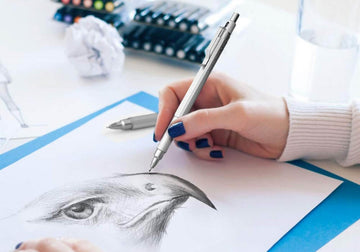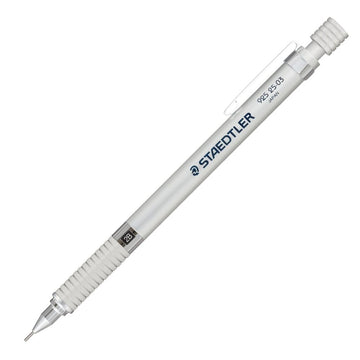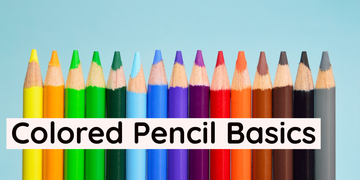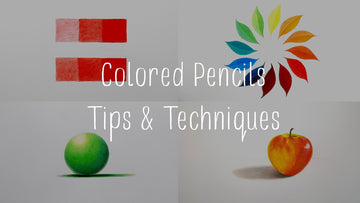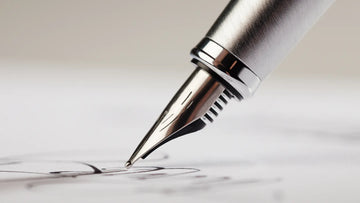
The Beginner’s Guide to Fountain Pens
Fountain pens are making a comeback among writers and stationery lovers alike. With their classic styling, customizable nibs, and fluid ink flow, it’s easy to see the appeal. If you’re intrigued by fountain pens, this guide will walk you through everything you need to know as a beginner.
A Brief History of Fountain Pens
Fountain pens were first developed in the late 1800s as an alternative to dip pens. The fountain pen reservoir held more ink and delivered it smoothly through a slit nib. No more constantly redipping!
Early designs like the stylographic pen used a tiny pipe for ink delivery. By 1884, Lewis Waterman created the first practical capped fountain pen with a spoon-fed nib and integrated ink sac. Further innovations throughout the 1920s-30s perfected the reliability of the instruments.
Though ballpoint pens displaced fountain pens in mainstream use, devotees still love them for expressive letter writing and calligraphy. Modern design and ink improvements make contemporary fountain pens both functional and beautiful.
Anatomy of a Fountain Pen
A basic fountain pen contains:
- **Nib** - Usually made of gold, steel, or titanium alloy. The slit in the nib draws ink from the reservoir and deposits it on paper.
- **Feed** - Controls ink flow from the reservoir to the nib slit.
- **Reservoir** - Holds ink, either via cartridge or internal filling system.
- **Grip** - Section where you hold the pen. Made of plastic, resin, or precious materials like lacquer.
- **Barrel** - Main body of the pen, contains the reservoir. Can be clear, translucent, or solid colors.
- **Cap** - Protects the nib when not in use. Slips on the end, snaps in place, or screws on.
How Do Fountain Pens Work?
Fountain pens deliver ink through a synergistic system of controlled leakage! Here are the basic mechanics:
1. The feed draws ink from the reservoir using capillary action.
2. The nib slit meters ink from the feed onto the paper.
3. As ink is deposited, air enters the reservoir to equalize pressure and allow continuous ink flow.
4. The nib tip splits the ink into thinner channels as it spreads across paper.
Combined factors like gravity, surface tension, and flow rate keep ink moving through the fountain pen with minimal effort.
Advantages of Fountain Pens
What makes fountain pens so great for writing?
- **Ink Choices** - Fountain pen inks come in a rainbow of colors and exhibit beautiful properties like shading and sheen.
- **Smoothness** - The constant ink flow means no pressure is required to write. The nib glides across paper.
- **Flexibility** - Soft nibs can flex and create expressive line variation. Great for calligraphy.
- **Environmental** - Refillable and designed to last for decades. Fountain pens reduce plastic waste versus disposable pens.
- **Personalization** - Change nibs and inks to perfectly suit your writing style. Makes a great heirloom gift.
For the ultimate writing experience, it’s hard to beat a well-crafted fountain pen.
Types of Fountain Pens
Fountain pens range widely in terms of size, filling systems, materials, andornamentation. Here are some of the major categories:
- **Cartridge/Converter** - Most common style. Uses interchangeable ink cartridges or a converter to draw ink from bottles.
- **Piston Filler** - A knob draws ink directly into the barrel by piston action. August Töpfer patented the first design in 1890.
- **Lever Filler** - Raising a side lever compresses an internal sac, sucking ink into the pen. Popular vintage filling system.
- **Vacuum Filler** - Similar to piston except with a sealed ink chamber. A plunger action empties then fills the ink reservoir.
- **Eyedropper** - The entire barrel is filled directly with ink using an eyedropper pipette. Holds a large ink capacity.
Nibs also come in a wide selection of tip sizes and flexibilities, from firm nails to soft brush-like calligraphy nibs.
Caring for Your Fountain Pen
Like any fine writing instrument, fountain pens benefit from some simple care:
- Flush pens before initial inking to remove manufacturing oils. Use warm water and a drop of mild soap if needed.
- Only use fountain pen friendly inks. Thicker calligraphy inks can clog the feed.
- Store pens horizontally or with the nib pointing up to prevent ink leaks.
- Cap pens when not in use so the nib doesn’t dry out.
- Use a light touch when writing. The nib should glide across the page.
- Clean pens when switching inks to prevent color mixing. Use a pen flush solution and water rinses.
With proper care and maintenance, a quality fountain pen will last for decades, or even generations!
Getting Started with Fountain Pens
If you’re ready to dip your nib into the wonderful world of fountain pens, here are some great options to begin with:
- **Pilot Metropolitan** - High-quality starter pen available in fun colors. Includes a converter for bottled inks.
- **Lamy Safari** - Durable plastic barrel in vibrant colors. Uses proprietary Lamy cartridges.
- **Platinum Preppy** - An inexpensive introductory pen perfect for students. Cartridge/converter fill.
- **Noodler's Ahab** - Flexible nib at a reasonable price. Best for calligraphy practice. An eyedropper fill pen.
- **Pilot Varsity** - Disposable fountain pen that's ready to write straight out of the package.
- **Ink sample packs** - Try a variety of ink colors from brands like Diamine, Noodler's, and J. Herbin.
The fountain pen community also offers wonderful resources and support for picking your first pen and discovering your personal writing style. With a little practice, you’ll be handwriting like a pro in no time!
Fountain pens are making a comeback among writers and stationery lovers alike. With their classic styling, customizable nibs, and fluid ink flow, it’s easy to see the appeal. If you’re intrigued by fountain pens, this guide will walk you through everything you need to know as a beginner.
A Brief History of Fountain Pens
Fountain pens were first developed in the late 1800s as an alternative to dip pens. The fountain pen reservoir held more ink and delivered it smoothly through a slit nib. No more constantly redipping!
Early designs like the stylographic pen used a tiny pipe for ink delivery. By 1884, Lewis Waterman created the first practical capped fountain pen with a spoon-fed nib and integrated ink sac. Further innovations throughout the 1920s-30s perfected the reliability of the instruments.
Though ballpoint pens displaced fountain pens in mainstream use, devotees still love them for expressive letter writing and calligraphy. Modern design and ink improvements make contemporary fountain pens both functional and beautiful.
Anatomy of a Fountain Pen
A basic fountain pen contains:
- **Nib** - Usually made of gold, steel, or titanium alloy. The slit in the nib draws ink from the reservoir and deposits it on paper.
- **Feed** - Controls ink flow from the reservoir to the nib slit.
- **Reservoir** - Holds ink, either via cartridge or internal filling system.
- **Grip** - Section where you hold the pen. Made of plastic, resin, or precious materials like lacquer.
- **Barrel** - Main body of the pen, contains the reservoir. Can be clear, translucent, or solid colors.
- **Cap** - Protects the nib when not in use. Slips on the end, snaps in place, or screws on.
How Do Fountain Pens Work?
Fountain pens deliver ink through a synergistic system of controlled leakage! Here are the basic mechanics:
1. The feed draws ink from the reservoir using capillary action.
2. The nib slit meters ink from the feed onto the paper.
3. As ink is deposited, air enters the reservoir to equalize pressure and allow continuous ink flow.
4. The nib tip splits the ink into thinner channels as it spreads across paper.
Combined factors like gravity, surface tension, and flow rate keep ink moving through the fountain pen with minimal effort.
Advantages of Fountain Pens
What makes fountain pens so great for writing?
- **Ink Choices** - Fountain pen inks come in a rainbow of colors and exhibit beautiful properties like shading and sheen.
- **Smoothness** - The constant ink flow means no pressure is required to write. The nib glides across paper.
- **Flexibility** - Soft nibs can flex and create expressive line variation. Great for calligraphy.
- **Environmental** - Refillable and designed to last for decades. Fountain pens reduce plastic waste versus disposable pens.
- **Personalization** - Change nibs and inks to perfectly suit your writing style. Makes a great heirloom gift.
For the ultimate writing experience, it’s hard to beat a well-crafted fountain pen.
Types of Fountain Pens
Fountain pens range widely in terms of size, filling systems, materials, andornamentation. Here are some of the major categories:
- **Cartridge/Converter** - Most common style. Uses interchangeable ink cartridges or a converter to draw ink from bottles.
- **Piston Filler** - A knob draws ink directly into the barrel by piston action. August Töpfer patented the first design in 1890.
- **Lever Filler** - Raising a side lever compresses an internal sac, sucking ink into the pen. Popular vintage filling system.
- **Vacuum Filler** - Similar to piston except with a sealed ink chamber. A plunger action empties then fills the ink reservoir.
- **Eyedropper** - The entire barrel is filled directly with ink using an eyedropper pipette. Holds a large ink capacity.
Nibs also come in a wide selection of tip sizes and flexibilities, from firm nails to soft brush-like calligraphy nibs.
Caring for Your Fountain Pen
Like any fine writing instrument, fountain pens benefit from some simple care:
- Flush pens before initial inking to remove manufacturing oils. Use warm water and a drop of mild soap if needed.
- Only use fountain pen friendly inks. Thicker calligraphy inks can clog the feed.
- Store pens horizontally or with the nib pointing up to prevent ink leaks.
- Cap pens when not in use so the nib doesn’t dry out.
- Use a light touch when writing. The nib should glide across the page.
- Clean pens when switching inks to prevent color mixing. Use a pen flush solution and water rinses.
With proper care and maintenance, a quality fountain pen will last for decades, or even generations!
Getting Started with Fountain Pens
If you’re ready to dip your nib into the wonderful world of fountain pens, here are some great options to begin with:
- **Pilot Metropolitan** - High-quality starter pen available in fun colors. Includes a converter for bottled inks.
- **Lamy Safari** - Durable plastic barrel in vibrant colors. Uses proprietary Lamy cartridges.
- **Platinum Preppy** - An inexpensive introductory pen perfect for students. Cartridge/converter fill.
- **Noodler's Ahab** - Flexible nib at a reasonable price. Best for calligraphy practice. An eyedropper fill pen.
- **Pilot Varsity** - Disposable fountain pen that's ready to write straight out of the package.
- **Ink sample packs** - Try a variety of ink colors from brands like Diamine, Noodler's, and J. Herbin.
The fountain pen community also offers wonderful resources and support for picking your first pen and discovering your personal writing style. With a little practice, you’ll be handwriting like a pro in no time!

